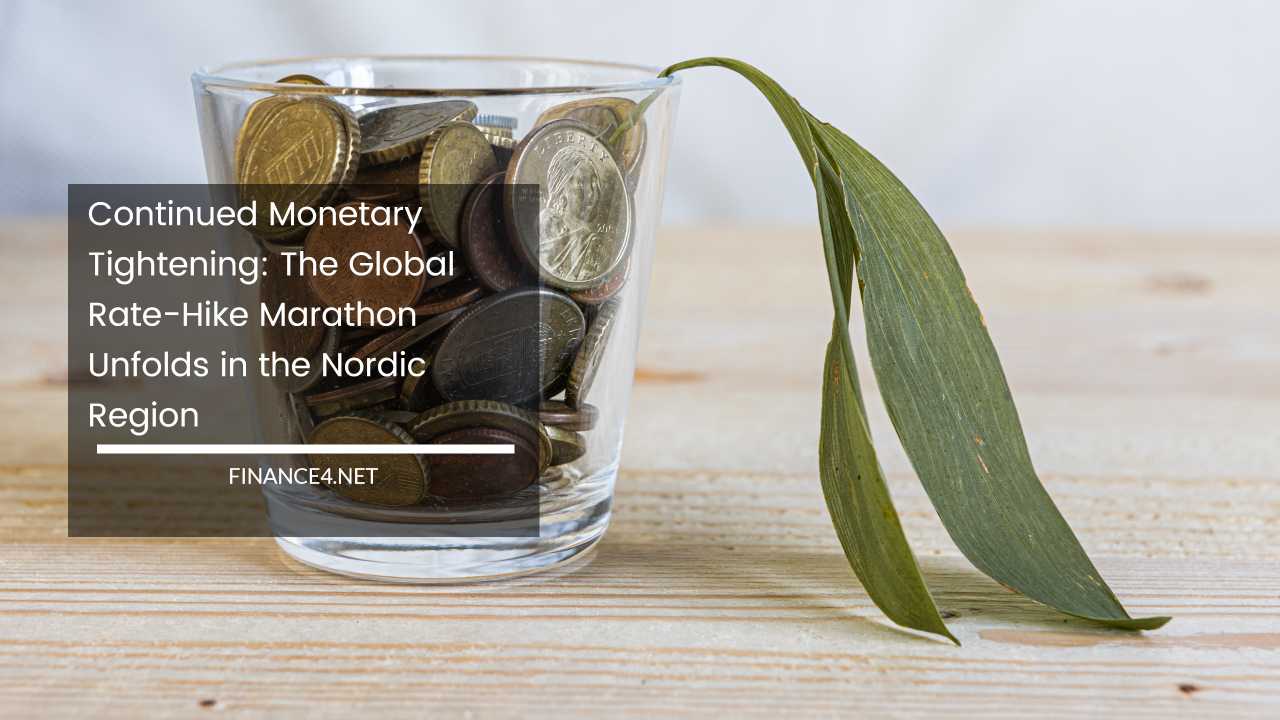Continued Monetary Tightening: The Global Rate-Hike Marathon Unfolds in the Nordic Region

Global Rate-Hike
On Thursday, all eyes will be on Sweden’s Riksbank as it contemplates another significant move in its monetary policy. The central bank might deliver a quarter-point increase, potentially pushing its key interest rate to 4.25%.
This decision is framed within the context of an ongoing battle against inflation, a challenge faced by central banks worldwide. However, the outcome remains uncertain, with divergent opinions among economists and investors.
Some voices in the financial sphere argue that Swedish officials could opt for an alternative strategy, expanding asset sales rather than relying solely on interest rate adjustments.
This might be coupled with a forward-looking signal, suggesting the potential for further rate hikes early in the coming year.
The complexity of the situation is reflected not only in the external discourse but may also extend to the Riksbank’s internal dynamics. The board, typically characterized by unanimity in rate decisions since Governor Erik Thedeen assumed office in January, may experience differing views on this pivotal matter.
In contrast to their counterparts in the United States, the euro zone, and the United Kingdom, who have recently pressed pause on interest rate hikes, central banks in Northern Europe, particularly the Nordic countries, are navigating a different path.
Norway’s central bank, a pioneer among the Group of 10 major currency jurisdictions, initiated rate hikes earlier, and as its December 14 decision looms, it may find some comfort in declining expectations for both price hikes and wage growth.
Nonetheless, there is speculation in financial circles that further tightening might be in the cards, especially given a recent acceleration in underlying inflation.
The Nordic countries, in comparison to major players like the Federal Reserve, the European Central Bank, and the Bank of England, place a distinctive emphasis on managing foreign-exchange pressures.
In Sweden, policymakers have faced challenges in their efforts to control inflation due to the persistent weakening of the krona.
This depreciation makes imported goods more expensive, adding to inflationary pressures. While the krona has shown some signs of strengthening recently, it remains vulnerable to deterioration, adding an element of uncertainty to the economic landscape.
Similarly, in Norway, the weakness of the krone, combined with recent consumer-price data, has prompted a reevaluation of predictions. Some economists have shifted from expectations of unchanged rates to anticipating an increase.
Analysts from Nordea Bank Abp, Dane Cekov, and Kjetil Olsen, have gone so far as to predict a rate hike in December, underscoring the fluidity of the economic environment and the challenges central banks face in managing inflationary pressures.
As the Nordic region grapples with these monetary policy considerations, one of its peers, Iceland, is expected to maintain its current interest rates this week, holding steady at 9.25%.
This decision is not a sign of inaction but rather a reflection of the substantial adjustments already made in recent times.
Iceland’s central bank was among the first in the advanced world to respond to the economic challenges posed by the pandemic, initiating rate hikes as early as May 2021.
Zooming out to a global perspective, the upcoming week holds various economic highlights. Central-bank minutes from the United States, the euro zone, and Australia will offer insights into the policy discussions and considerations of these major economies.
Additionally, purchasing manager indexes across advanced economies will provide a snapshot of the manufacturing and services sectors, offering indicators of economic health and potential future trends.
A fiscal statement from the United Kingdom adds another layer of complexity, as nations grapple with the ongoing economic uncertainties and challenges posed by the pandemic.
The nuanced and dynamic nature of these monetary policy decisions reflects the intricate dance central banks perform in attempting to strike a balance between inflation control, economic stability, and growth.
The ongoing global economic landscape, marked by recovery from the pandemic and inflationary pressures, underscores the importance of these decisions and their potential implications for financial markets, businesses, and individuals worldwide.
In conclusion, the upcoming monetary policy decisions in the Nordic region, particularly Sweden’s Riksbank, offer a microcosm of the broader challenges faced by central banks globally.
The delicate dance between inflation control, economic stability, and growth requires a nuanced and adaptive approach.
As central banks navigate these uncertain waters, the global community watches closely, aware that the outcomes will ripple through financial markets and impact economies at both regional and international levels.



